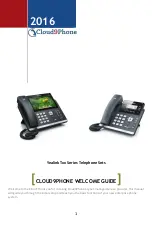
126
Web configurator – configuring the phone on a PC
Gigaset DE900 IP PRO / en / A31008-M2210-R101-4-7619 / web_configurator.fm / 05.09.2012
PRO V
e
rsion 3, 30
.0
5.2012
Outbound Proxy Mode
Specify when the outbound proxy should be used.
If you leave the
Outbound Server Address
field empty, the phone does not respond to the
selected mode and operates as if
Never
were selected.
Outbound Server Address
Enter the DNS name or the IP address of your provider's outbound proxy. With many pro-
viders, the outbound proxy is identical to the SIP proxy.
Outbound Proxy Port
Enter the number of the communication port used by the outbound proxy. The default
port is 5060.
Automatic Negotiation of DTMF Transmission
DTMF signalling is required, for example, for querying and controlling certain network
mailboxes via digit codes or for remote operation of the local answering machine. Select
whether the setting should be made automatically. If you select
No
, you must determine
the setting for the DTMF transfer yourself.
Send Settings for DTMF Transmission
To send DTMF signals via VoIP, you must define how the key codes are to be converted to
DTMF signals and sent:
Ask your VoIP provider which type of DTMF transmission it supports.
¤
Click on
Next >
.
Always
All signalling and voice data sent by the phone is sent to the outbound
proxy.
Automati-
cally
Data sent by the phone is only sent to the outbound proxy when the phone
is connected to a router with symmetric NAT or a blocking firewall. If the
phone is behind an asymmetric NAT, the STUN server is used. If you have set
STUN enabled
to
No
, or if you have not entered a STUN server, the out-
bound proxy will be used in all cases.
Never
The outbound proxy is not used.
Audio
As audible information in the voice channel, i.e., it is not known which key
has been pressed.
RFC 2833
As a value (= key pressed) in an RTP packet.
SIP Info
As an "SIP Info" message.
The value (= key pressed) is sent as an SIP data packet.
















































